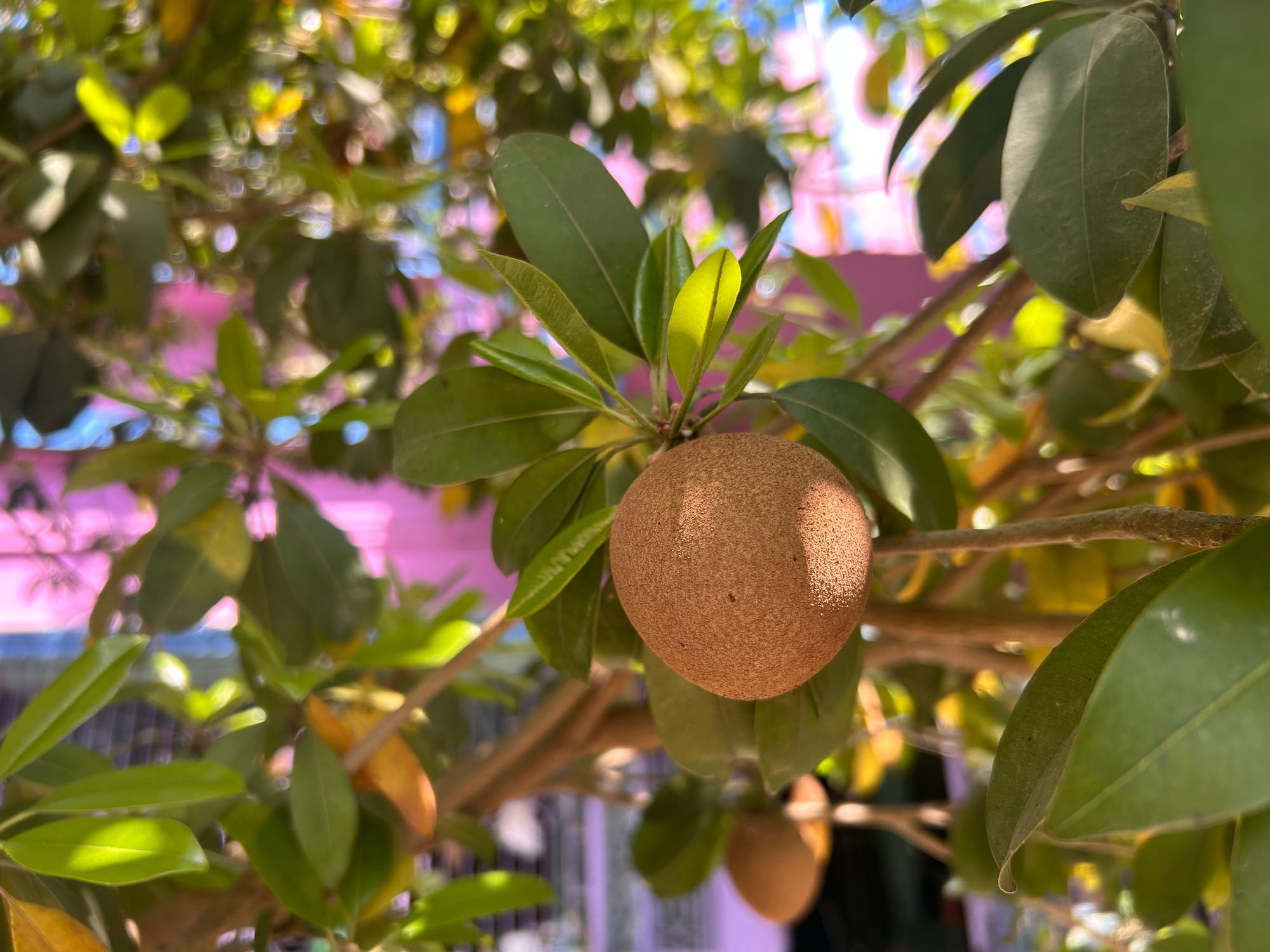
Have you just bought a sapodilla tree and are unsure how to take proper care of it? In this article, you will find everything you need to know to grow sapodilla successfully.
If you haven't gotten a sapodilla tree yet, my first suggestion is to choose a variety you would like the most.
I have a large orchard for my fruit trees and have grown multiple fruit trees. Sapodilla is one of my favourites. If you are interested in checking what other fruit trees I have, read: best fruit trees to grow in Florida.
Sapodilla (Manilkara zapota) is also known as Nispero (used by Spanish-speaking communities) and Dilly (in some parts of South Florida).
The first question that might arise is: "Can we grow sapodilla in this zone or that zone?" - When I said you will get everything, I really meant it.
Ideal growing conditions for Sapodilla tree (with USDA Zone)
| Condition | Requirement |
|---|---|
| USDA Zone | 9b – 11 |
| Temperature | Above 30°F (-1°C); prefers warm tropical climates |
| Sunlight | Full sun (at least 6-8 hours per day) |
| Soil Type | Well-draining, sandy or loamy soil; pH 6.0–8.0 |
| Watering | Drought-tolerant once established |
| Humidity | Moderate to high humidity |
| Fertilization | Balanced fertilizer (e.g., 8-3-9) applied 3-4 times a year |
| Spacing | Plant trees 20–30 feet apart |
| Pruning | Minimal; remove only dead or crowded branches |
This is just to give you a basic idea. Will discuss this in depth later in this article.
As we can grow sapodilla in Zone 9, 10 and 11. It's ideal for Florida's climate (mostly south and central Florida).
Sapodilla is a salt-tolerant tree. This is why people prefer to grow it in beach-side and hurricane-prone areas.
List of states in the US where we can grow sapodilla
Considering the above growing conditions, I have created a list of states where you can grow sapodilla.
| State | Growing Conditions |
|---|---|
| Florida | Ideal climate, commonly grown in South Florida. |
| Texas | Coastal and southern regions (e.g., Houston, Corpus Christi, Brownsville). |
| California | Southern areas, particularly in protected spots with warm microclimates. |
| Hawaii | Perfect tropical conditions for year-round growth. |
| Louisiana | Southern parts with mild winters. |
| Arizona | Low desert regions with frost protection. |
If your sapodilla is in ideal growing conditions, you can expect Year-Round fruit production.
Variety recommendation for Sapodilla Tree
| Variety | USDA Zone | Max Height | First Harvest | Fruiting Season | Fruit Production |
|---|---|---|---|---|---|
| Alano | 10-11 | 15-30 ft | 3-4 years | Year-round | High |
| Hasya | 9b-11 | 20-30 ft | 3-5 years | Spring & Fall | Very High |
| Makok | 10-11 | 10-15 ft | 2-3 years | Spring & Summer | Moderate |
| Molix | 9b-11 | 20-30 ft | 3-4 years | Summer & Fall | High |
| Silas Woods | 9b-11 | 8-12 ft | 2-3 years | Year-round | Moderate |
"Makok" and "Silas Woods" are dwarf varieties.
Alano, Hasya, and Molix can go even taller in ideal growing conditions.
If you want to grow sapodilla commercially, you should consider the fruit production rate as well (given in the chart).
Planting instructions and growing guide for sapodilla tree
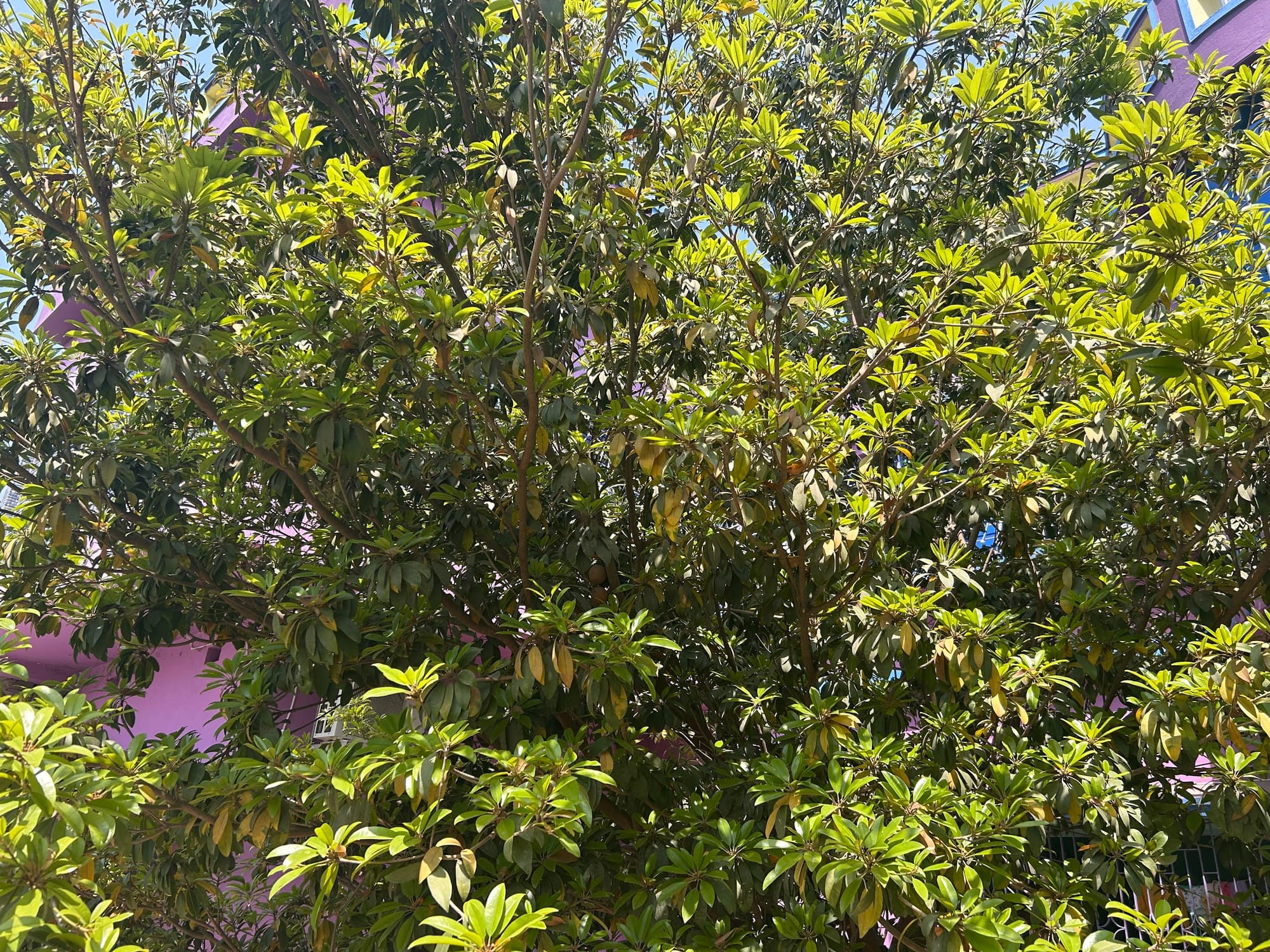
You need to make sure you are choosing the right location for the plantation.
Sunlight
Right location means a sunny spot where it can get at least 6-8 hours of direct sunlight. Sapodilla loves a lot of sunlight.
Soil
Try to plant in sandy soil instead of heavy clay soil. If your garden soil is not sandy, you can mix perlite in the soil before plantation.
Don't worry if your soil is not sandy enough. This is a tree, and it can go really big. The roots are going to dive deep into the soil. Practically we do not change the soil type that deep.
Yes, sandy soil can increase the fruit production rate, but for your home garden, you should give it a try if the soil is not that sandy.
Though it's a tree and can really go tall, the woods are not so heavy. I have grown one sapodilla tree in front of my house, and this is the main attraction now.
Created a nice sitting area under the tree. Have a look at this picture:
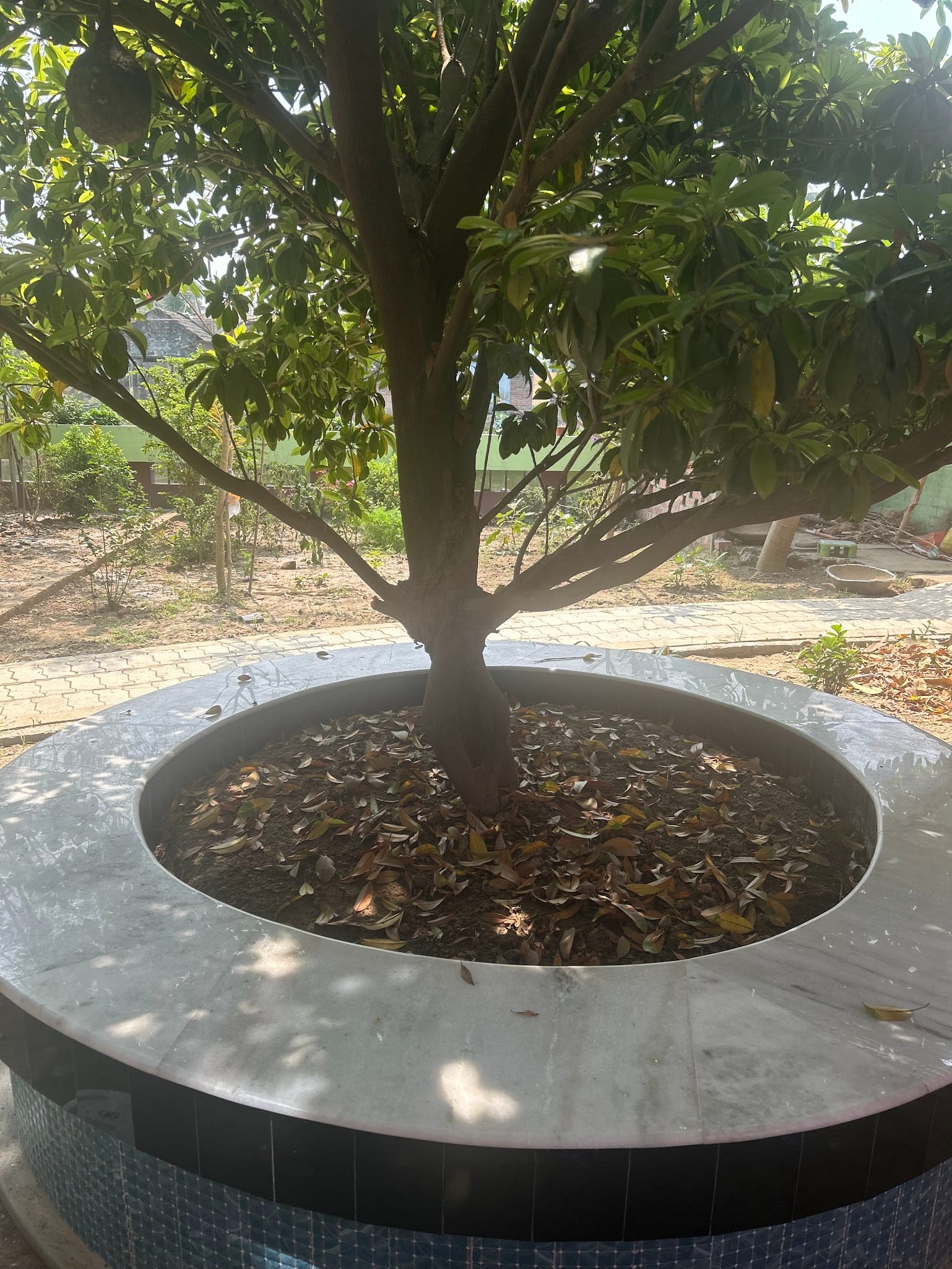
Ignore the hanging nest in the picture. That is an artificial one.
I will not recommend planting in low-lying areas where water may collect.
When and how much water does your sapodilla tree need?
After plantation, keep the soil moist.
After 6 months (or sometimes 3 months), your tree gets established, so reduce watering.
On dry winter days and hot summer days, water your tree thoroughly.
I have already told you sapodilla can tolerate drought. But watering on dry and hot days, will increase the fruit production.
No need to mulch
I have fallen in love with nature again, seeing the natural mulching.
When you see new leaves are coming out, older leaves start falling off. The fallen leaves help suppress weeds and will also act as a natural mulch.
Fertilizer for a sapodilla tree
I have seen a lot of articles and online shops selling special fertilizers for specific fruit trees.
But we need to understand the growth stages of a fruit tree. At each growth stage, the tree demands some specific nutrients over others.
I hope this article will help: best homemade fertilizers for fruit trees based on growth stage
In short, use potassium-rich fertilizer for fruit development when the tree is mature enough.
Pruning a sapodilla tree
Pruning is not necessary for a sapodilla tree. Pruning on some trees may increase fruit production but sapodilla is not like those.
When you see dead, diseased, or crossing branches, you can prune.
Cold protection
I will not recommend growing a sapodilla tree in colder regions, but if you have already grown one, you need to be serious about protecting your sapodilla tree from cold snaps.
Keep frost cloth or cold sheets handy to cover your tree.
Note: A lot of yellow leaves on your sapodilla tree is not something to worry. In the new growing season, you can see new foliage and older leaves turning yellow at the same time.
Fruiting time of sapodilla tree
In general, the sapodilla tree produces fruits twice a year, but you can see the fruits hanging on the tree all year.
The fruits take a long time to become mature/ripe. (6–8 months after flowering)
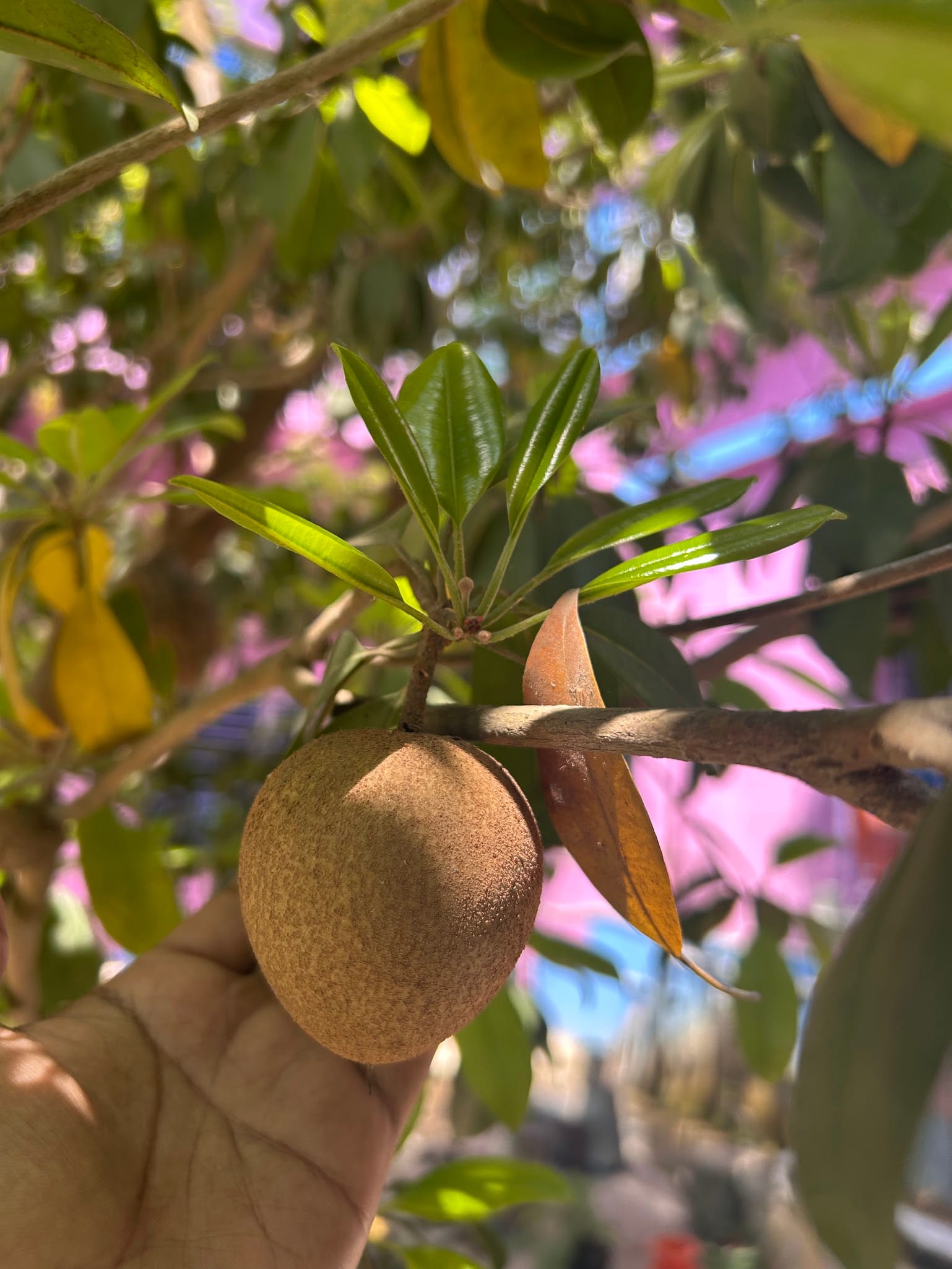
You can see in the above picture that my sapodilla tree is having fruit and new flower buds at the same time.
In most of the areas,
- Main Fruiting Season: February–May
- Secondary Fruiting Season: September–November
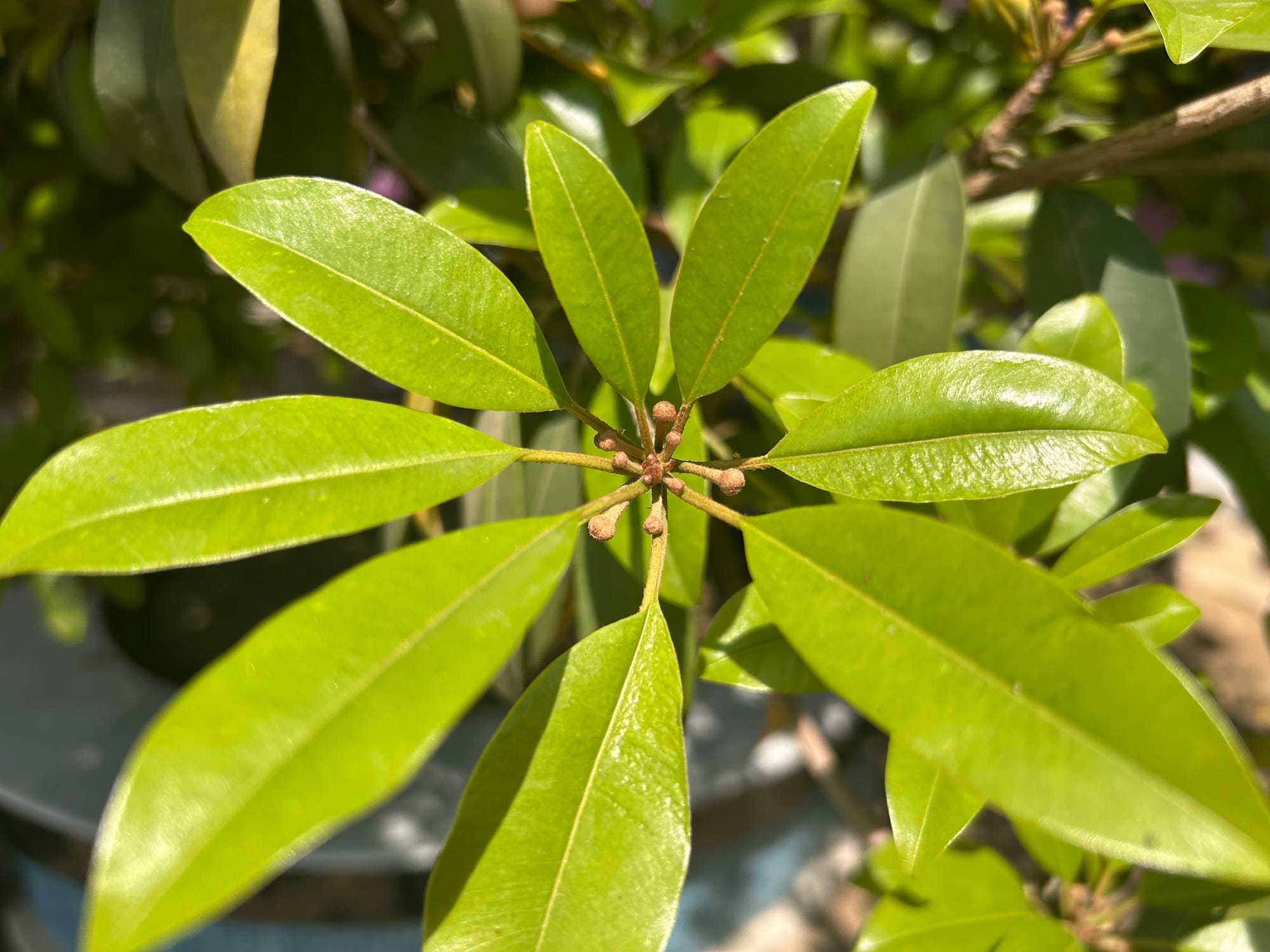
When you see new Sapodilla flower buds coming out, apply high-potassium (K) fertilizer to support flowering.
Did I miss anything? Do let me know in the comments. I will be super glad to respond.
Subscribe to this site to get personal gardening experiences. This is something that motivates me to bring more gardening guides to you.
